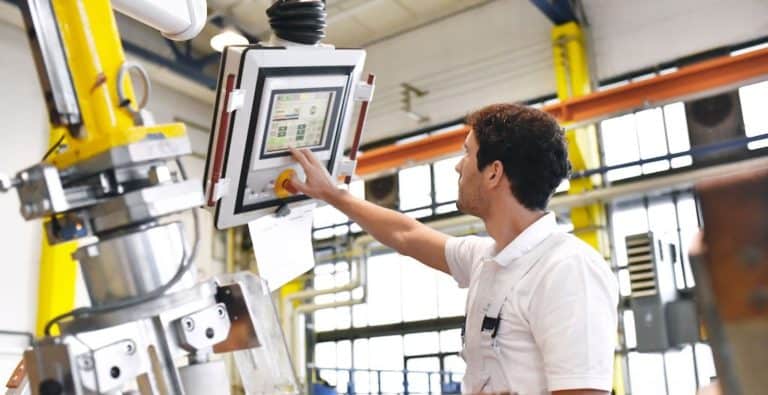I have been wanting to blog about the combination of Cloud and DevOps and Service Desk – the subject of a presentation I did with Kathleen Wilson at itSMF USA Fusion 15 earlier this month. It covered some of the lessons learned and changes in approach that were required to grow cloud scale services. Also, I am co-authoring on “Service Desk 2.0” with Aale Roos that I hope will be published soon by TSO. There are connected patterns across all these subjects that I thought I would bring together here.
Table of Contents
ToggleThere are some big relationships between Cloud/DevOps trends and their impact on Service Desk. It was only after seeing a presentation at an internal Microsoft conference that I saw the sense in combining these into a single lucid column. The changes taking place both within Microsoft and IT organizations everywhere cannot be considered “business as usual”.
The Cloud
If you haven’t heard the news yet, the cloud is a big hit. It is changing the IT industry in ways not seen since the personal computer replaced green screen terminals. For those playing the home game, we all used to work on 80×24 text, green screen monitors. I have been asked different questions about the cloud from people with questions like:
- What is the cloud?
- Why should I care?
- What changes with the cloud?
- What are the risks?
- What happens if…?
There is an overriding fear of the cloud that I think people have to get past before we can answer the questions above. To put things into perspective, I have used the following analogy to explain the irrational fear of cloud;
People hear about commercial airplane crashes because they almost always make the news. They are really big news events even when a small planes crash. I have met people who fear flying for this very reason. The “loss of control” or being in the news, usually results in this irrational fear of flying – DESPITE all statistics showing that flying is the safest mode of transportation around (including walking, based on distances).
Statistically, auto accidents make up the majority of fatalities in travel, yet people come to the conclusion that air travel is more dangerous because they don’t see the magnitude of the damage caused by auto accidents as these are, unfortunately, very common and not newsworthy unless they shut down a freeway. Traffic fatalities occur much more often than air fatalities, but are often not reported in the news.
Failure – more common than you know
Likewise, organizational IT failures are generally not made known unless they impact the business publicly. Most organizations aren’t aware that failures are common in many IT organizations. They are woefully unaware of issues and failures in other organizations because this is not public information. They think, like driving a car vs. flying in commercial airlines; “If I can control it, I can make it better than anyone else”. If Amazon, Google or Azure go down – it’s a trending topic on Twitter (unless Twitter is down too). IT organization have an internal failure, it’s the cover-up of the year, unless it is detected externally.
A colleague of mine wonderfully extended the cloud-travel analogy; In a car, a person in either the driver or passenger seat has a great deal of say about each trip that is made. For example, they can check the maintenance, tire pressure, and determine the physical and mental state of the driver, route and fuel status. If they feel the risk is too high with any of these metrics, they make an easy choice not to make the drive.
Blind Trust
There is a much higher degree of blind trust placed on the airline industry. For example, passengers have no idea of the maintenance status of the aircraft, ability of the crew to safely operate the aircraft or if the plane is fueled properly. People are willing to climb aboard most any airline without questioning any of the many safety factors. Even when comparing one carrier against another, overall it is almost axiomatic that airline travel is safer than it is by car even though there is no control left to passengers about any of the specifics.
It is not that all air travel is categorically safer than travel by road. Indeed, catastrophic, serial failures by airlines are often tracked and reported on in the press, helping to guide consumers in their travel choices. It is partially through the transparency of records that airline safety records have continued to improve.
As the events subsequent to 9/11 proved, people make emotional risk decisions based on feelings and emotions, and not on data. There was an increase in automobile accidents and fatalities after the 9/11 attacks that has been attributed to 9/11 and the fear of flying. In fact, the increase was greater than the unfortunate number of people killed in the 9/11 attacks in New York and Washington DC.
Two questions for you: Have you ever refused to take a trip in a car because you felt the driver was too incapacitated to drive? Many will answer yes. What about an airplane? I’ll bet of the people reading this blog, almost no one has considered checking the pilots, flight crew, or aircraft for safety – you trust the airlines and you are comfortable with the risk level. The cloud industry should ask: Are we transparent enough to provide organizations interested in considering cloud services similar trust and risk levels for data as the airline industry does with people’s lives?
Modern Service Management
The next question, and a source of a lot of discussion in the industry, is “What happens to ITSM when clouds roll in?” At Microsoft we have been evolving an internal term called “Modern Service Management” which incorporates what you may find in traditional ITSM, but also evolved, amended and eliminated practices, principles and thinking from traditional Data Center centric ITSM thinking. Modern Service Management isn’t a new framework, architecture or class, nor anything to be licensed and proprietary from Microsoft. It’s simply a perspective from the inclusion of our own experiences with ITSM, Cloud Scale Services, DevOps as well as other industry efforts such as IT4IT.
DevOps
DevOps was at the top of the Gartner Group hype cycle in July 2015 and like everything will likely experience the “Trough of Disillusionment”. Like many approaches, technologies, services and trends, it won’t necessarily be because of itself, it will be because of its misuse or misapplication.
I watched a great presentation from the Microsoft Office 365 operations team who shared a number of perspectives and learnings that are core to what we are calling “Modern Service Management” within Microsoft. Learning from cloud-scale services like Office 365 and Azure, we see what perspective changes are needed and where, and what types of technologies are needed to make this happen.
Just some of these evolved Modern Service Management perspectives include;
- Monitor for Service Capabilities, not Faults – this requires “mapping” the service and monitoring those services end to end rather than just individual elements. To do this requires a service map that highlights dependent services, components and other things that make up the service. Most importantly capturing accountabilities within the organization.
- Monitoring IP and Monitoring technology separated – treating monitoring as a service, provided by operations or infrastructure, but having the what and how rules determined by service or application and service owners.
- Ruthless Standardization and Militant Automation – it’s time for IT to get out of intellectual grunt-work that consumes 60, 70, sometimes 80% percent of the IT organization’s human resources. Cloud Services are almost completely automated. IT organizations must adopt this paradigm in order to remain competitive and provide the same level of service. Standardization results in “Managing fewer things for millions” vs. “Managing many things for hundreds”. There is only a limited amount of IT resource – maximize its capabilities.
- Treat Manual Tasks as Bugs – treat any manual activity, or manual request, as a bug vs. embracing it as the eminent domain of IT. The more labor intensive work that can be eliminated through automation or leaning a process, the more resources are freed up for value added work.
- Automated Intake and Self Service – instead of the IT Self Service Portal being the “nice to have”, 10% workload driver, it should be the focus, and how most requests are handled by automation or a Service Desk. Remember it’s not true self-service if it takes someone on the backend to do the work.
Cloud, DevOps and what I have learned at Microsoft has influenced how I approach “Modern Service Management”. Again, it’s not intended to replace existing service models and frameworks like ITIL, or emerging ones like IT4IT – it’s actually just what we believe has become Microsoft’s own unpatented and evolved approach to Service Management through learning and mistakes made along the way.
Service Desk 2.0
In the Service Desk 2.0 book that is due to be published soon, I have added aspects of Modern Service Management as well as the impact the evolving role of Service Desk;
- The Service Desk shouldn’t exist to do everything but should be there to assist its customers in doing for themselves – self service, automation, knowledge and portal technology should be the focus for support and work intake – The service desk should support this. Think Microsoft Answer Desk or Apple Genius Bar.
- This means the majority of “intake” shouldn’t be coming to the IT organization via the telephone. The more demand that can be deflected through targeted communication and knowledge management, or shifted through the self-service portal, can considerably improve quality, cost and value of the IT Service Desk function.
- Consider “ticketing”, in its former sense, as a legacy workload based on limitations (licensing or technical) of tooling at the time. If using ITIL terms, Events and Incidents should be logged by the service provider and the majority should result from monitoring. On the other side, requests or cases are what comes from the customer. Incidents should be a low percentage of workload if they are tuned properly from events/alerts. Consider “incident” just a politically correct word for failure and it should be treated as such.
The Versatilist
It’s an exciting time to be in the IT industry if you are keeping up with evolving technology. Gartner Group coined a phrase in 2005 called the “versatilist” where they predicted IT professionals would need to become “versatilists” as technology evolves with mobility and the cloud becoming mainstream. I think the era of the versatlist is upon us and it applies to all roles in IT. IT professionals have to be adept at more than just IT frameworks or specific technologies.
The MOST important skill set is the ability to learn and adapt quickly. If you simply got a degree in college and learned the classes of the day I think you missed the point. Most of what I took in college is obsolete today, but college wasn’t about learning the tech of the day, it was about learning how to learn and adapt.
Today more than ever in IT, you need to adapt, develop a network of smart buddies, learn and grow, and be courageous to step out into something new and uncomfortable.






